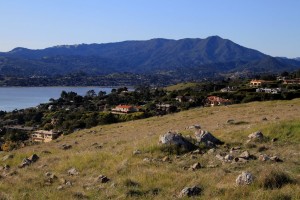
our hills
I was seven years old when Tami invited me down the street to her dress up birthday party. She was a year older, and I thought she was far more sophisticated than me. Her dad was a professional photographer and he took a picture of the party girls dressed up in their fancy clothes. Tami stood in the center in her mink, sporting a black eye her brother had given to her by accident. I stood a couple of girls to her left, wearing a gypsy skirt and top my mom altered for me from her wardrobe. My wide smile showed my thrill to be part of that celebration. The photograph remains as one of my childhood treasures.
Over fifty years later, Tamara and I are getting reacquainted in the same neighborhood where we grew up. Both of us had parents who lived in their homes for over fifty years, a rare phenomenon for women living in Northern California. We were planted and grew roots in this developed community.
What makes a neighborhood? We watch the East Coast neighborhoods in films, but our West Coast Post WWII neighborhood was built fast, twenty minutes north of the Golden Gate Bridge. Most parents commuted to San Francisco. Houses were small compared to the ones built today, but were called ‘estates,’ because we had huge backyards.
Our houses were not designed for the ‘get to know you’ neighborhood experience. The developer built bedrooms in front, and the focus was on large glass windows looking onto our backyards. Yards were our main attractions. Houses are close together, but big yards maximize a sense of privacy. Neighbors generally got to know the ones with driveways beside theirs. We met each other in the front yard, mowing crabgrass lawns or washing cars. We did not sit on porches watching each other walk by because no one had a real porch.
I believe this lack of front porch design changed intimacy in our suburbia. It was less simple to observe each other in daily lives. The privacy everyone craved seemed to have created a type of alienation along with it. We shared living spaces as strangers, and we don’t all know each other unless we’ve lived here awhile. We all share the surrounding hills, and that is what made our neighborhood special.
Lucky for me, I can now become truly acquainted with a woman whom I have known over fifty years, and I feel grateful we were given a chance to reconnect at all, since we are the only two left. We love our love the hills and the bay. Both of us grew up loving our patch of Earth, and we have memories before other subdivisions came to encroach our subdivision. We were the first of the heavy duty population changes that occurred in California, but we certainly haven’t been the last.
What Tamara and I felt about our land as children was wrecked by development and the result of bulldozers and the changers. Like so many, our hopeful parents came from other places, and brought us here as children, but we grew up to call it our home. Our neighborhood is over fifty years old, and many people think it’s ‘vintage.’ We are considered Old Marin, but compared to the rest of America, our history is still new.
Very sweet reminiscence and sharp insight… I can attest that the neighborhood is now more than SIXTY years old! I remember that our immediate neighbors met at our house to plan the purchase of lumber and subsequent building of the backyard fences that first year. This little bit of community action was sort of a paradox, in that these people came together for a common cause; to build barriers between them. Dad built all three fences for our less physically inclined bordering neighbors. They were not impenetrable fortresses, though. Remember, we first met when you looked over the fence after your family moved in to the North-West!
Soon there came the fence-walking tradition, pioneered by the older kids.
Thanks for the reminder about the fencewalking, I have a story about that for next week. Insightful about the barriers, “…good fences make good neighbors,” like Frost said.